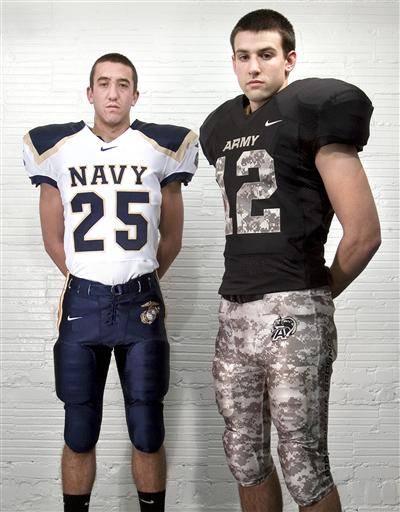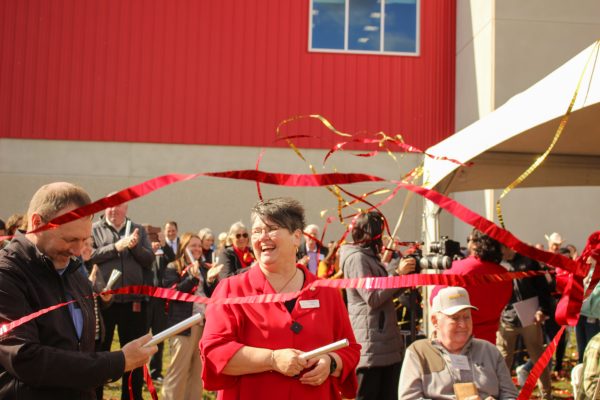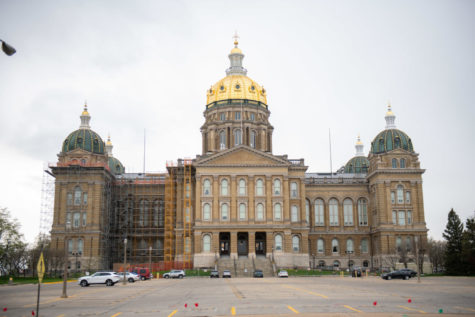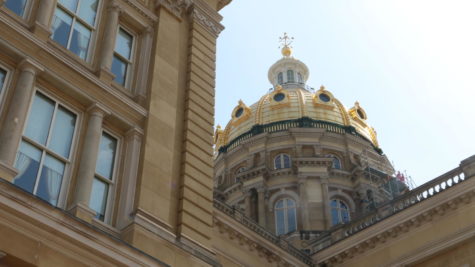Waterloo firm provided new look at football game

Waterloo Columbus High School students Will Olmstead, left, and Clay Patten model the Navy and Army uniforms made for Nike at Powers Manufacturing in Waterloo for the Saturday, Dec. 6, 2008, Army-Navy game. Photo by Rick Chase / Waterloo Courier
December 8, 2008
WATERLOO, Iowa (AP) — The Army-Navy game dates to 1890. The company based in Waterloo that outfitted both teams for this year’s clash on the gridiron is almost as old.
Powers Manufacturing outfits a long roster of high school and college teams, including the University of Northern Iowa, Iowa State University and the University of Iowa. The company, which uses its own and the Nike brand, is situated on Waterloo’s east side and employs 180 people.
Powers did its part to take Saturday’s annual Army-Navy game into the future. The company, working with Nike, supplied uniforms with a new look for both teams.
“We’ve been working with them over the past year to make it happen,” said Grant Weidner, Powers’ president.
Weidner is the great-great-great nephew of Leonard Powers, who founded the company in 1902. Twelve years earlier Army played Navy for the first time on a football field.
The game Saturday served as a showcase for Powers and the uniforms, Weidner said.
“Our understanding is, initially, it’s for this game,” he said. “In talking with our Nike people, they’re also talking about, at least for Army, having a set of these made for a game potentially next year against Air Force.”
Navy dominated Army as the Midshipmen trounced the Black Knights, 34-0.
The Army uniform isn’t necessarily unique in aesthetics, said Scott Klieman, Powers’ vice president of sales and marketing. But he said the togs feature a lot of innovation.
“It’s a design using technical fabrications that stretch and allow a lot of freedom of movement yet maintains durability,” Klieman said.
The company, using a process known as sublimation, gave the uniform a camouflage design with “eye-catching” numbers, Klieman said.
“The pant is a basic Spandex material we provide for most of our Nike college teams, but here again, the uniqueness is an entire sublimation of the pant in the camouflage design in the different shades of a desert print camouflage,” Klieman said.
He likes the affect.
“It’s beautiful. There’s some wording down both sides. One side says ‘West Point.’ The other says ‘Boots on the Ground,'” Klieman said.
The camouflage motif is a first in college athletic uniforms.
“I think the uniqueness is what makes it jump out,” Klieman said.
The Navy uniform is reminiscent of a Marine Corps officer’s official dress.
“It has navy-colored pants with the old Marine vegas-gold red down the side that Marines actually wear,” he said.
The Navy jersey is white with a Navy yolk with a panel that extends from the collar to the edge of the shoulder. The pants sport a Marine stripe down the side.
“We’ve sublimated a design that matches the shoulder boards that the officers would wear,” Klieman said.
Both teams’ jerseys sport their respective logos.
But why the change for such a game laden with tradition?
Marketing, Klieman said.
“Part of the reason Nike is doing it is promotion for their custom uniform lines that high schools and colleges can buy,” he said. “They’re trying to develop an impact that’s going to translate to additional sales for their product.”
The game, which attracts a national audience annually, was the first major showcase of a product that will soon be available to high school and college teams nationwide, Klieman said.
“They’re working on a number of promotional pieces,” he said.















